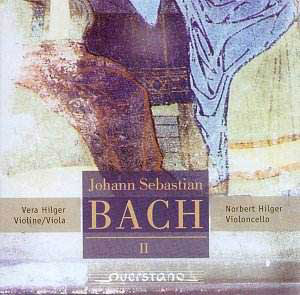Vera and Norbert Hilger had a very interesting idea
in transcribing some of Bachís keyboard works for the combination of
violin and cello. After a successful first recording, they present here
an additional selection of works. Their transcriptions bring out the
essence of these keyboard pieces with a truly unique sound. While some
of the music is certainly lost, what is gained more than compensates.
The disc opens with a dark sound; that of the B minor
French Overture. The cello is very present here, providing an almost
gloomy undercurrent for the double stops of the violin, which give a
stronger sense of polyphony than the first disc this duo recorded. However,
there is a bit more reverb which tends to drown the instruments just
a bit.
At times the tempi are a bit too slow, and it sounds
like the Hilgers are edging away from the sound they developed in their
first recording - where it truly sounded like the keyboard music was
being played on violin and cello. Here, in movements such as the sarabande
of the French Overture, the tempo is a bit too slow, and breaks with
the rest of the work. But other movements sound just right - the bourrées
and the gigue, for example.
The flaws are the same as in the first recording. Many
of the slower movements sound too wooden, and the violinís tone is not
always spot on. It is even painfully off-key in the opening double-stops
of the second partita. But when it gels, the music is excellent. The
allemande of the G major French Suite shows just how this type of transcription
can work. The two instruments are in symbiosis, and one can forget that
this music was originally written for keyboard.
Another interesting recording, which, in spite of its
flaws, shines new light on some of Bachís finest music.
Kirk McElhearn


